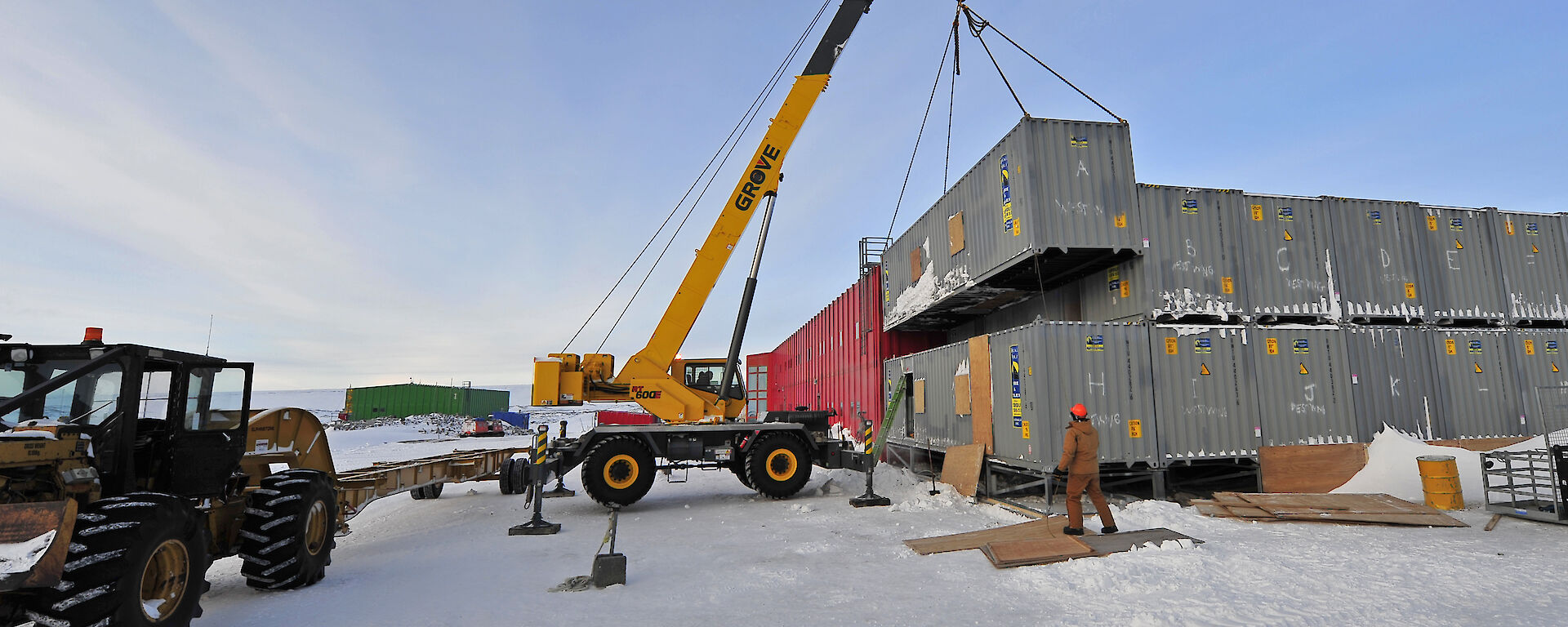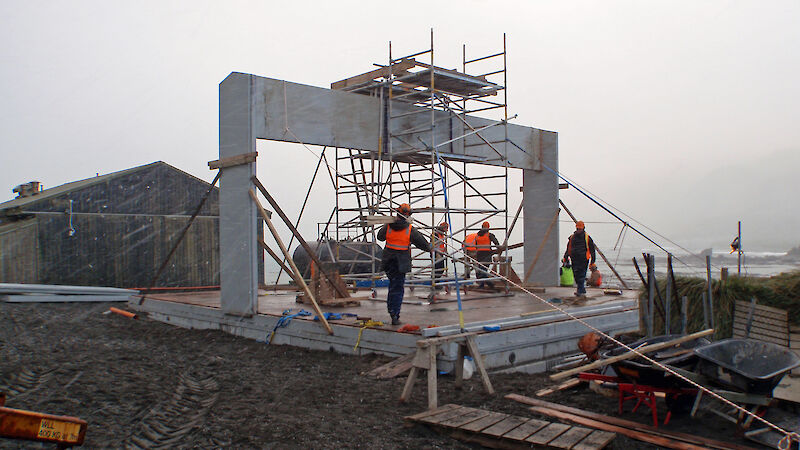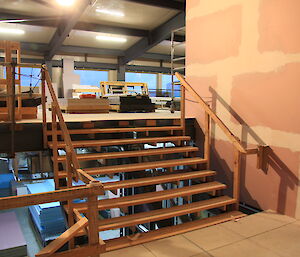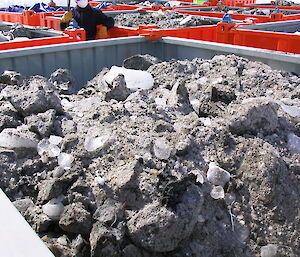The 2009–10 Antarctic/subantarctic operational season stretched into the current season, with a number of station infrastructure projects continuing throughout winter and a number of short winter traverses.
On Macquarie Island a new powerhouse was constructed to provide a more reliable energy supply for radionuclide detection equipment run by the Australian Radiation Protection and Nuclear Safety Agency. ARPANSA carries out Australia’s radionuclide monitoring obligations under the Comprehensive Nuclear Test Ban Treaty. Its seven radionuclide monitoring stations, located within Australia and its territories, can detect the time, location and nature of a possible nuclear event.
The Tasmanian Government’s rabbit and rodent eradication project on Macquarie Island also began in June. The Antarctic Division is providing logistic support to the eradication program and more details are available at the Parks and Wildlife Service (Tasmania) website.
Building work continued on the living quarters at Davis during winter (see Australian Antarctic Magazine 17: 26, 2009) and works are scheduled to be substantially completed by the end of summer, with the first occupants moving in at the start of winter 2011. At Casey, work continued on the ‘west wing accommodation’ – an extension to the living quarters known as the ‘Red Shed’ – and will be completed in February 2011. The extension will add 36 new single-occupancy rooms, which replace the 24 beds that are currently housed in 25 year old shipping containers. The extension consists of 14 x 40 foot-long shipping containers, on two levels, clad with insulation panels in the same colour as the Red Shed. The new building will more comfortably accommodate the influx of short-term visitors, arriving at Casey via the Airlink, over summer.
A number of short traverses were conducted over winter to support a variety of projects and to build and develop experience in such undertakings. The Davis crew attempted a traverse to the Larsemann Hills and Amanda Bay just after mid-winter, but were thwarted by abnormally low temperatures (around −40°C) and a range of associated mechanical and equipment issues. Despite this the team added greatly to the Australian Antarctic program’s experience base for winter traverse operations. A successful sea-ice traverse was mounted at Mawson to investigate the emperor penguin colonies at Taylor Glacier and Fold Island. Similarly at Casey, another short traverse was mounted to undertake maintenance work to the automatic weather station on Law Dome summit.
The 2010–11 summer season will again see approximately 500 people deployed south with the Australian Antarctic program, with departures from October 2010 until April 2011. The first expeditioner contingent departed in October on the Airbus A319–Hercules C130 (United States) link from Hobart to McMurdo and Casey, while the French ship L’Astrolabe took expeditioners to Macquarie Island and the Aurora Australis transported people and cargo to Davis (for transfer to Mawson by air). The two twin turboprop C-212 aircraft also made the long 11.5 hour transit from Hobart to Dumont d’Urville and then on to Casey, where they are supporting projects across all three continental stations.
An American and a German Basler will each visit Casey during the summer to undertake geophysics surveys over the icecap, while two Squirrel helicopters will operate from Davis station and then support the Macquarie Island resupply. The Antarctic Division is also supporting the US, French, Italian and other national programs with aviation support, and receiving reciprocal assistance in the form of shipping, aviation and project support.
At Commonwealth Bay, the Mawson’s Huts Foundation, in conjunction with the Antarctic Division, will again undertake important conservation work on the historic huts built by Sir Douglas Mawson and his team almost 100 years ago.
Finally, the last of the waste from the old Thala Valley tip at Casey – about 540 tonnes stockpiled on geotextile fabric at the site – will be containerised for removal. The waste consists of soil containing heavy metals and hydrocarbons (mostly fuel and lubricants) that was left over from a large-scale clean-up in 2003–04, when containers ran short. The tip was used in an era before complete waste removal was practised by Australia (1964–1980). The Protocol on Environmental Protection to the Antarctic Treaty established an international obligation for waste disposal sites to be cleaned up by the generators of the waste. Once the waste stockpile has been removed, long-term chemical and biological monitoring of nearby Brown Bay will assess the effectiveness of the clean-up effort and the recovery of the ecosystem.
ROBB CLIFTON1 and WENDY PYPER2
1Operations Support and Coordination Manager, 2Corporate Communications, Australian Antarctic Division





